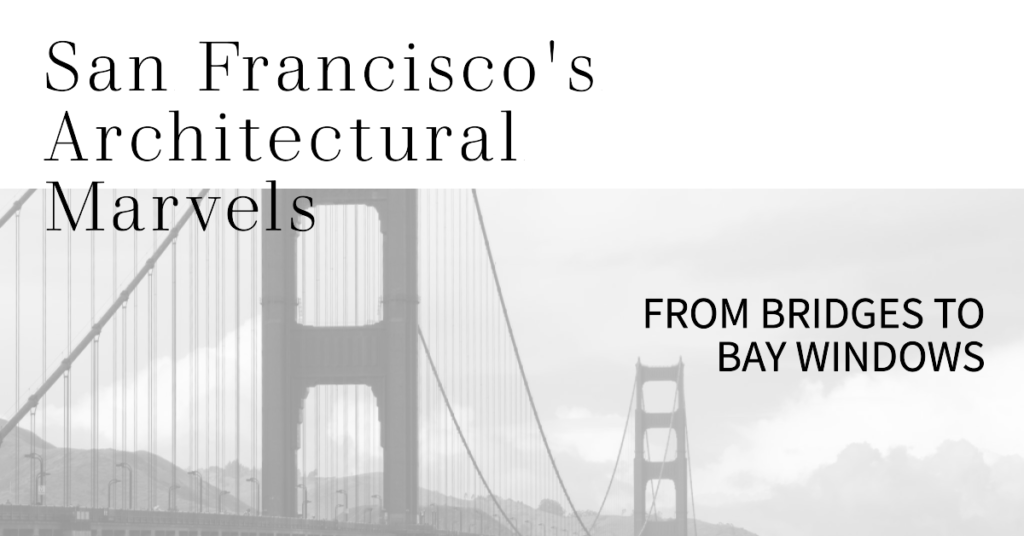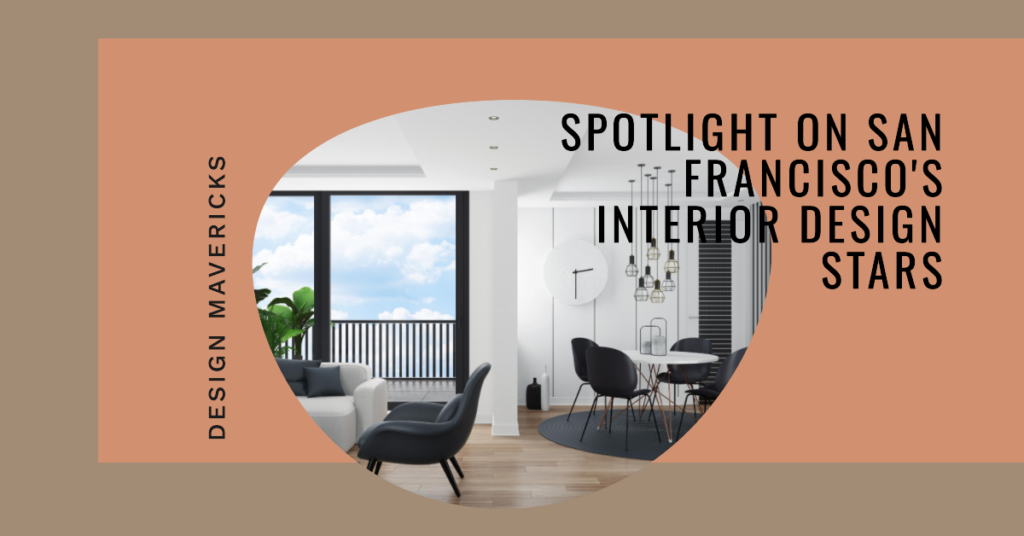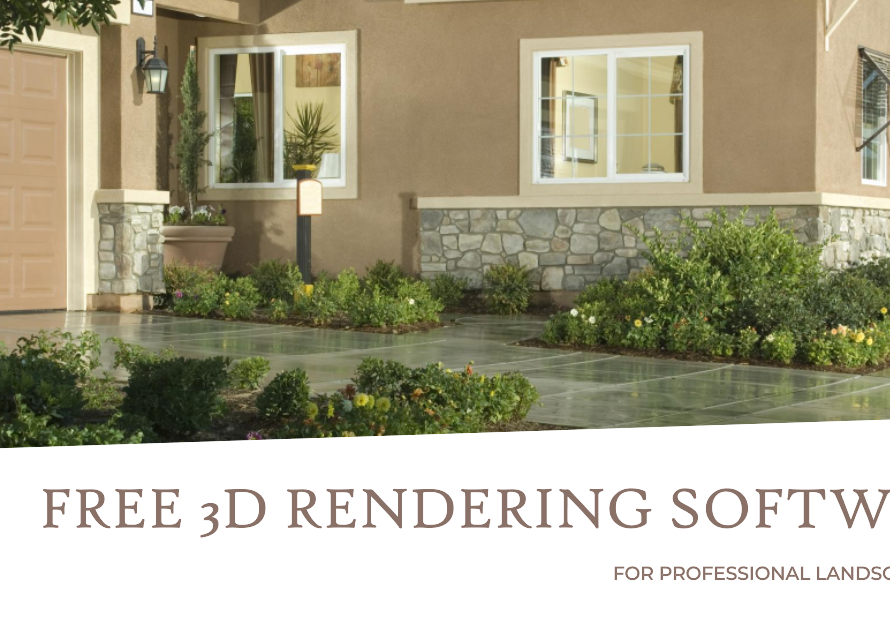
Table of Contents
Introduction:
From Bridges to Bay Windows: Exploring San Francisco’s Architectural Marvels, Welcome to the city where innovation meets tradition, where towering bridges dance with quaint bay windows in a symphony of architectural marvels. San Francisco, nestled along the picturesque shores of Northern California, boasts a rich tapestry of diverse architectural styles that have shaped its skyline and captured the imagination of millions. Join us on a virtual tour as we explore the iconic landmarks and hidden gems that define the City by the Bay.
Bridging the Gap: The Engineering Feats of San Francisco’s Bridges
First up on our architectural odyssey are the iconic bridges that span the glittering waters of the San Francisco Bay. From the majestic Golden Gate Bridge, with its vermillion towers standing sentinel against the backdrop of the Pacific Ocean, to the stately Bay Bridge, connecting the bustling metropolis to the East Bay, these engineering marvels are more than mere conduits for transportation—they are symbols of human ingenuity and perseverance.
The Golden Gate Bridge, a testament to the vision of its creators, Joseph Strauss and Charles Alton Ellis, stretches nearly two miles in length, its suspension cables cutting a dramatic silhouette against the fog-kissed horizon. Using state-of-the-art 3D visualization solutions, engineers meticulously planned every aspect of the bridge’s construction, from the placement of its towering pylons to the curvature of its roadway, ensuring both aesthetic beauty and structural integrity.
Bay Windows: The Quirky Charm of San Francisco’s Victorian Architecture
Transitioning from the grandeur of bridges to the charm of bay windows, we delve into the heart of San Francisco’s Victorian architecture. Characterized by ornate facades, colorful trim, and of course, the iconic bay windows that adorn many of its historic homes, Victorian architecture adds a whimsical touch to the city’s streetscapes.
These bay windows, protruding outward from the facade of a building and typically featuring multiple panes of glass, serve as more than just architectural embellishments—they offer panoramic views of the cityscape, invite natural light into interior spaces, and create cozy nooks for reading or relaxation. Through advanced 3D visualization technologies, architects and builders can meticulously recreate the intricate details of Victorian bay windows, ensuring historical accuracy and preserving the charm of these beloved architectural features for generations to come.
From Painted Ladies to Modern Masterpieces: San Francisco’s Architectural Evolution
As we journey through the streets of San Francisco, we encounter a kaleidoscope of architectural styles that reflect the city’s rich cultural heritage and ever-evolving identity. From the iconic “Painted Ladies” of Alamo Square, with their vibrant hues and elaborate gingerbread trim, to sleek, contemporary skyscrapers that pierce the skyline with their glass and steel facades, the city’s architectural landscape is as diverse as its inhabitants.
Transitioning seamlessly between past and present, traditional and avant-garde, San Francisco’s architecture tells a story of innovation, resilience, and adaptation. Through the lens of 3D visualization solutions, architects and urban planners can envision the future of the city’s built environment, balancing preservation with progress and honoring the past while embracing the possibilities of tomorrow.


Preserving the Past: Restoration and Rehabilitation in San Francisco
Amidst the rapid pace of development, preserving the historical integrity of San Francisco’s architectural treasures remains a paramount concern for preservationists and heritage advocates alike. From iconic landmarks to humble storefronts, buildings that have stood the test of time serve as tangible links to the city’s past, offering glimpses into bygone eras and preserving the stories of those who came before.
Through innovative restoration and rehabilitation efforts, architects and conservationists breathe new life into aging structures, ensuring that they remain vibrant and relevant in the modern world. Utilizing cutting-edge 3D visualization technologies, preservationists can meticulously document every detail of a historic building, from its ornate moldings to its weathered facades, allowing for accurate restoration and replication of original features.
The Skyline of Tomorrow: Sustainable Design and Green Architecture
As concerns about climate change and environmental sustainability continue to shape the discourse around urban planning and development, San Francisco emerges as a pioneer in the realm of green architecture and sustainable design. From LEED-certified buildings that minimize energy consumption to innovative green spaces that promote biodiversity and community engagement, the city is leading the way towards a more eco-friendly and resilient built environment.
Through the use of advanced 3D visualization solutions, architects and designers can model and simulate the environmental performance of buildings, optimizing factors such as solar orientation, natural ventilation, and thermal efficiency. By integrating sustainability principles into every stage of the design process, from concept development to construction and beyond, San Francisco is setting a precedent for cities around the world to follow in the pursuit of a greener, more sustainable future.
A Symphony of Spaces: Exploring San Francisco’s Public Architecture
Beyond its iconic landmarks and historic neighborhoods, San Francisco boasts a wealth of public architecture that enriches the fabric of urban life and fosters a sense of community and belonging. From grand civic buildings that embody the city’s civic pride to intimate public spaces that invite spontaneous gatherings and social interaction, these architectural gems serve as hubs of activity and cultural exchange.
Through the lens of 3D visualization, urban planners and designers can reimagine public spaces as dynamic, multifunctional environments that respond to the needs and aspirations of diverse communities. By integrating elements of placemaking, accessibility, and inclusivity into the design process, San Francisco’s public architecture reflects the city’s commitment to creating vibrant, livable spaces that enrich the lives of residents and visitors alike.
Conclusion:
In conclusion, San Francisco’s architectural landscape is a testament to the city’s rich history, vibrant culture, and spirit of innovation. From the towering bridges that span its shimmering bay to the quaint bay windows that adorn its historic homes, each architectural marvel tells a story of resilience, creativity, and community. By harnessing the power of 3D visualization solutions, architects, engineers, and urban planners are shaping the future of the city’s built environment, balancing preservation with progress and ensuring that San Francisco remains a beacon of inspiration for generations to come. Join us on this journey as we continue to explore the wonders of San Francisco‘s architectural wonderland.


